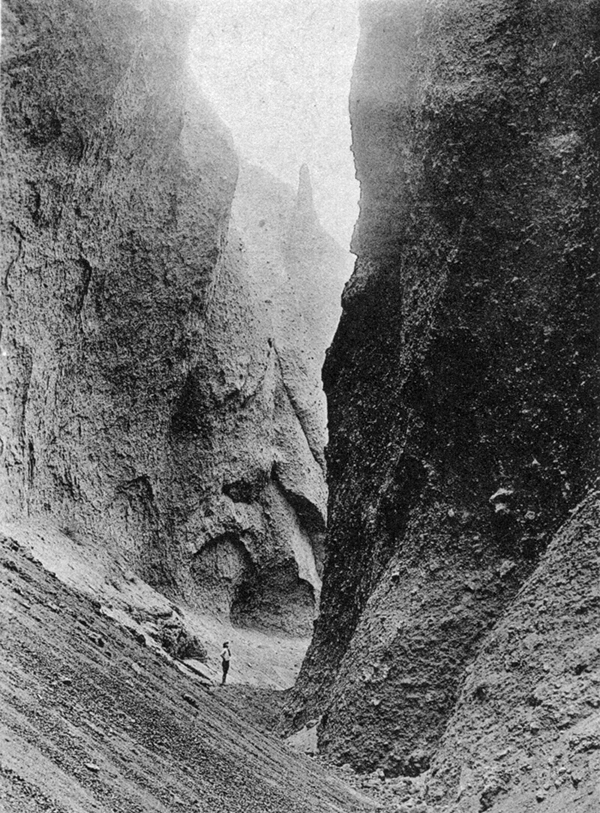The Geology of Crater Lake National Park, Oregon With a reconnaissance of the Cascade Range southward to Mount Shasta by Howell Williams
The Climax: Culminating Explosions of Pumice and Scoria
The Glowing Avalanches: Pumice and Scoria Flows
The Paucity of Stratification
|
Plate 15. Fig. 2. Llao’s Hallway, a tributary canyon on the south side of Castle Creek, cut in massive, unbedded, chaotic deposits of a scoria flow (nuée ardente). (Photograph by National Park Service.) |
Being deposited in avalanche fashion, the pumice flows usually show no trace of stratification and at best a crude one. Here and there thin lenses and stringers of fine tuff among the coarser materials suggest the settling of swirls of dust during lulls in the passage of successive flows. Locally, also, there is a rough alignment of the large lumps near the base of the flows, probably caused by deformation under load. Apparently, however, the pumice lumps were neither hot enough nor sufficiently rich in gas to suffer welding. Bedding is most conspicuous in the canyons of Annie, Sun, and Sand creeks, where the earlier deposits of pale dacite pumice are overlain by a darker layer of basic scoria. Within individual flows there is usually no stratification whatever. See, for example, plate 15, figure 2.
***previous*** — ***next***


